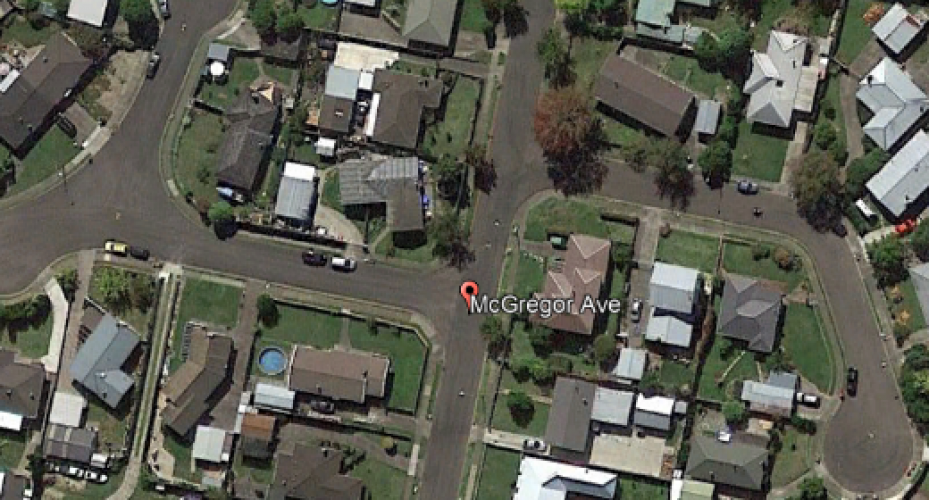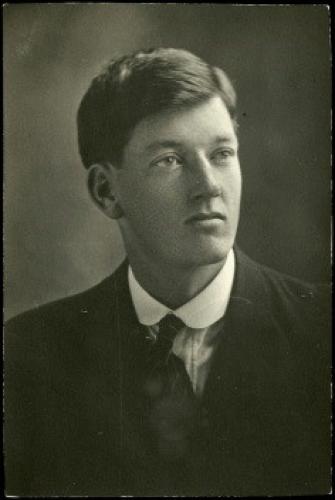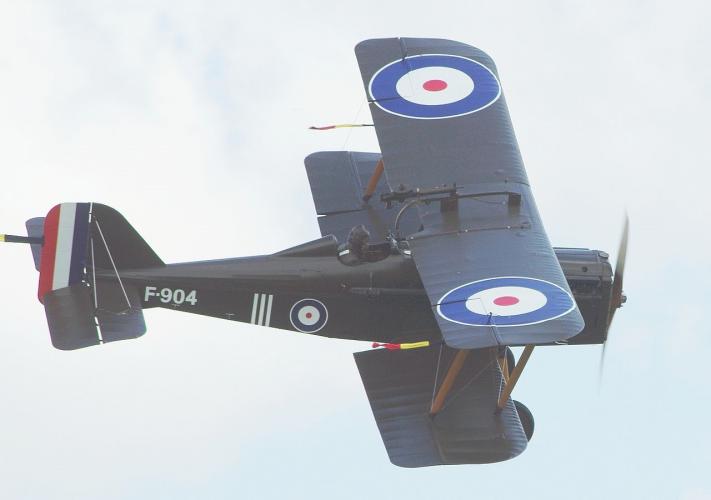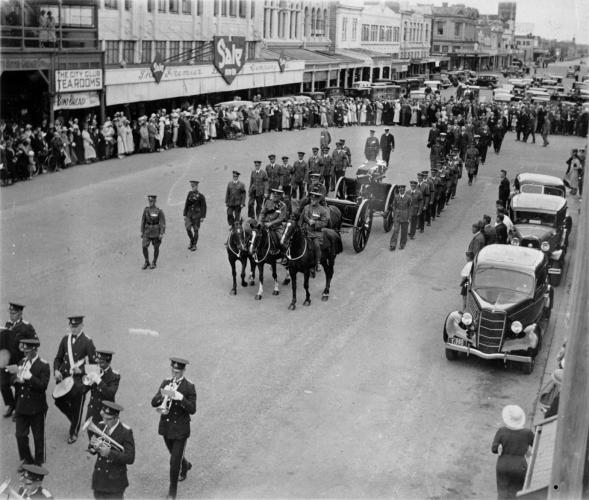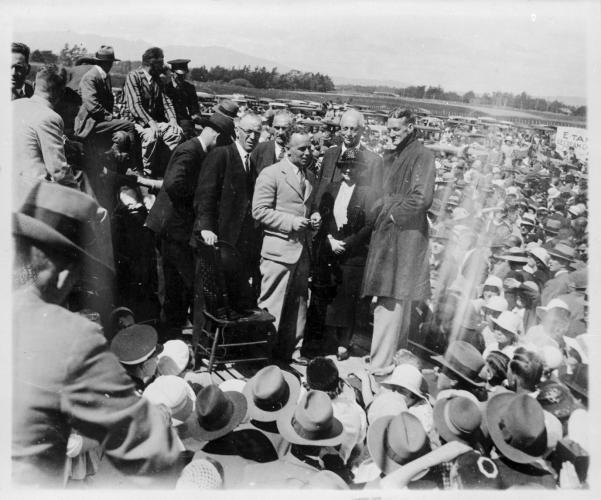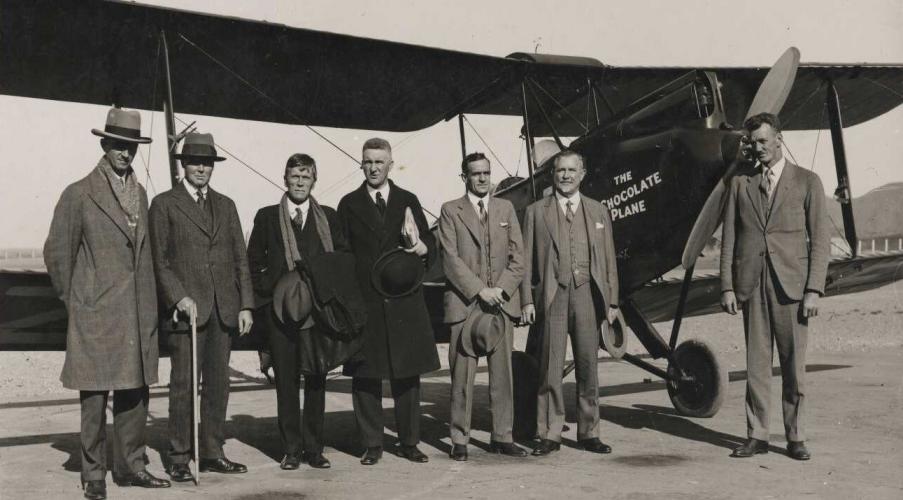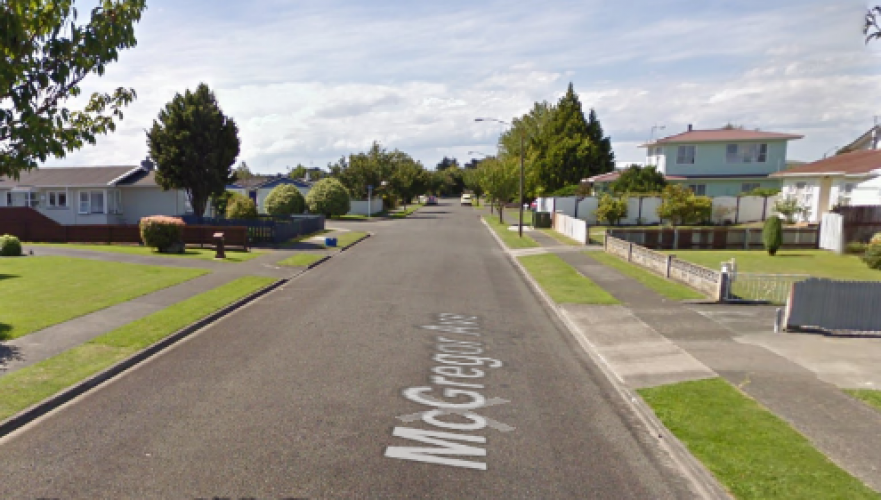220 McGregor Avenue Napier, street scene 2018
Reason for the name
This Pirimai Napier Street was named in honour of Squadron Leader Malcolm Charles McGregor a flying ace from World War 1
Malcolm Charles McGregory was born near Hunterville, New Zealand on 4 March 1896. When grown, he was six feet three inches tall. MacGregor was granted his Aero Certificate in September 1916. On 7 April 1917, McGregor was appointed a Flying Officer in the Royal Flying Corps. His first aerial success came on 6 June 1917, while he was with 54 Squadron. He used a Sopwith Pup to destroy a German Albatros D.III fighter southwest of Cambrai, France.
He would not score another victory for almost a year. During this time, he survived being shot down. He was posted for a short time to No. 91 Squadron RAF. After transferring to No. 85 Squadron RAF to pilot a SE.5a, he drove down an enemy reconnaissance plane over Armentières on 29 May 1918. Three days later, on 1 June, he drove down a pair of Pfalz D.III fighters over La Gorgue, France. On 27 June 1918, he destroyed another German recon machine and became an ace.
On 24 July, he scored another double win southeast of Kemmel, Belgium, destroying one Fokker D.VII and driving another out of combat. On 3 August, he destroyed a Fokker D.VII. On 10 August, he was again shot down; again, he survived. Later in August, on the 22nd, he destroyed yet another Fokker D.VII. This was the action referred to when he was awarded the Distinguished Flying Cross, which was not gazetted until 2 November 1918.
On the 22nd August this officer displayed great gallantry and skill in an engagement between six of our scouts and a similar number of the enemy; all the latter were accounted for, Captain McGregor driving down one out of control. In all he has seven enemy aircraft to his credit—four destroyed and three driven down out of control.
McGregor would next turn balloon buster, destroying an enemy observation balloon east of Maretz, France on 8 October. He ended his string of triumphs by destroying another recon plane on 23 October 1918. His final tally was an observation balloon and five enemy airplanes destroyed, plus four planes driven down out of control.
McGregor was one of the officers awarded a Bar to his Distinguished Flying Cross as a birthday gift from his sovereign on 3 June 1919. He was discharged from the Royal Air Force by being placed on the unemployed list on 17 July 1919. He returned to New Zealand to farm. McGregor joined the Royal New Zealand Air Force in 1921. In 1923, he was appointed Squadron Leader. He also took part in civil aviation activities. He ran a barnstorming operation, Hamilton Airways. He flew a passenger route between Dunedin and Christchurch in a De Havilland DH.50 borrowed from the New Zealand government. He flew some pioneering airmail routes throughout New Zealand. In late April 1929, he participated in the New Zealand Air Pageant, entering a de Havilland Gypsy Moth from Hamilton Airways. By the end of 1931, he was reported carrying air mail from Invercargill, New Zealand to Auckland in a Simmonds Spartan. In 1932, he became chief instructor to the Manawatu Aero Club. While flying with Union Airways, he broke his back in a crash. By 1934, he had risen to the rank of Squadron Leader in the RNZAF, and had 3,300 flying hours in his pilot's log.
He was one of the contestants in the MacRobertson Air Race in October 1934. He and his co-pilot completed the course, Mildenhall to Melbourne, in 7 days 15 hours, in a Miles Hawk Major. Following the race, he became a director of Union Airlines of New Zealand. McGregor was killed in an air crash at Wellington, New Zealand on 19 February 1936.
Author: The Poppy Places Trust
This story has been created by Evan Greensides, Heritage Assistant for Palmerston North City Library.
History of Squadron Leader Malcolm Charles McGregor. Born in Mangamako near Hunterville in the Manawatu-Whanganui region on 4 March 1896, Malcolm Charles McGregor was the youngest of three children born to sheep farming parents Ewen and Matilda McGregor (née Chubbin). Initially refused parental permission to enlist in the army during the First World War, McGregor turned to writing to the adjutant-general of the New Zealand Defence Force, stating,
As I am only 19 ½ years of age and my parents will not allow me to go to the trenches till I am 21, I am anxious to serve my country, and my ambition is to join the Flying Corps. Could you please supply me with full particulars of which course to follow? Is it necessary for me to apply to the Flying School, Auckland, or through the Defence Recruiting Officer? Please pay this matter your utmost urgent attention as I am anxious to join the Flying Corps straight away.
With the Defence Department unable to help, McGregor entered Leo and Vivian Walsh's New Zealand Flying School at Mission Bay, Auckland, qualifying on 9 September 1916. Soon after he sailed for England aboard the Willochra.
Following 3 months of advanced training with the Royal Flying Corps, McGregor was posted as a fighter pilot to No 54 Squadron in France. After seeing limited action in the air above the battlefield, on 29 June McGregor’s Sopwith Pup engine failed, unbalancing the machine and forcing him into an emergency landing along the pockmarked front lines. Hitting a crater and overturning, McGregor’s head smashed into his machine-gun, knocking out his teeth and fracturing his jaw. A lengthy recovery in hospital ensued.
While McGregor was put into a flying instructor role after exiting hospital, he soon found these duties frustrating compared to the excitement of fighter pilot endeavours. Over this time period he was reprimanded for performing such stunts as chasing a train, attempting to remove a wind vane from a church spire with his propeller and terrorising a local town with ever more dangerous acrobatics. During a daring “buzzing” of Buckingham Palace and low down the Thames River, McGregor noted,
It was a glorious evening and there were crowds punting and rowing. We flew along a few feet above their heads, taking the bends in great style and turning back to see any extra pretty girls... Got off with a severe reprimand. Plonk!
Ever the amuser, one morning McGregor lost his false teeth. Concerned that no one would be able to understand him if shot down, McGregor, to the great delight of his squadron, refused to fly until they were found.
McGregor returned to France in May 1918 and was posted to No 85 Squadron of the recently established Royal Air Force. Commanded by Canadian ace Billy Bishop and flying SE5a fighters throughout the final offensives of the war, McGregor was promoted to captain on 22 July and given command of his own flight. The recommendation for the Distinguished Flying Cross described McGregor as “a pilot of exceptional, even extraordinary skill… a clever leader, full of resource and dash.” He was awarded the DFC and bar, and was credited with downing 10 enemy aircraft and an observation balloon.
McGregor gave an insightful account into actions which took place in the aerial battlefield above the trenches, stating,
Once you find the lines (and you do that by flying east until you are shot at), it is wonderful the good that can be done by helping the infantry, knocking out machine guns, shooting up troops and transport etc. Whenever an aeroplane flies low over hostile troops, it seems to be the craze for anyone with anything that will shoot to let blaze… [put] a hole in my pal’s leg from an explosive bullet. Plucky little beggar, after being hit he turned back into Hunland and dropped his bombs on the people that fired at him, all on one of the worst days an aeroplane had flown.
However, back at No 85 Squadron’s airfield the need to inject a bit of humour into the bleak landscape around them led to the unit collecting a vast menagerie of animals. It was expected that every officer was to have a pet, an unwritten rule which had started when the unit smuggled 4 chow puppies across the Channel. Every animal from then on was fair game - the unit soon after possessed “a motley collection of assorted dogs, goats and even poultry”. McGregor, after being shot down inside Allied lines and waiting for a staff car to pick him up and return him to the airfield, kidnapped a nanny goat. Arriving back at base, he justified the presence of the new pet as being able to provide the squadron with milk for their cups of tea.
On the evening of November 10, as word quickly spread that there would be peace the next day, Malcolm was dining with others from the squadron in the mess tent when a mechanic burst in, stating, “They are signing the Armistice tomorrow, and there will be no more war.” Malcolm feigned throwing a glass at the mechanic and stated, “Out of this, you blighter, and take your dismal news with you”. McGregor returned to New Zealand in August 1919 aboard the Bremen, returning to his parents' Waikato property and undertaking farm work before purchasing his own dairy farm at Taupiri. The farm proved difficult to sustain in the harsh economic conditions of the early 1920s, however, and Malcolm reluctantly disposed of it in 1925. Malcolm returned to his father's new farm at Rukuhia, near Hamilton, managing the business there. While at Rukuhia, McGregor met Isabel Dora Postgate, a law clerk, and the two were married on 29 July 1925 at Frankton Junction. Malcolm and Isabel had two sons and two daughters. In 1927, Ewen McGregor sold the farm, and Malcolm worked as a drover for the next two years around the area. McGregor's passion, however, remained with aviation, and after his father’s farm sold he returned to the sector.
Malcolm was a founding member of the New Zealand Air Force (Territorial) in 1923, was promoted to squadron leader and appointed commanding officer of No 2 (Bomber) Squadron in 1930. Malcolm had earlier been granted a commercial pilot's licence and formed Hamilton Airways when he acquired a single de Havilland Gipsy Moth. While his military career had proved successful, Malcolm’s later commercial ventures did not fare so well. In 1930 he was technical director of the short-lived National Airways (NZ), operated a Gipsy Moth named 'Chocolate Plane' for Cadbury Fry Hudson Limited and, in partnership with Maurice Clarke, formed Air Travel. Although the main revenue stream was through operating a regular Christchurch–Dunedin service, the company survived up until 1932 chiefly through other means such as joyriding, parachuting and experimental airmail flights.
In late 1932 McGregor relocated to Palmerston North after he secured regular employment as chief flying instructor for the Manawatu Aero Club. This was interrupted, however, by a lengthy hospital stay after a flying accident in December where he crashed during a competition in which pilots had to burst hydrogen balloons with their propellers. After his recovery, Malcolm and Henry Walker entered the London to Melbourne Air Race in 1934, flying a Miles Hawk aircraft named “Manawatu” which was owned by the Manawatu Centenary Air Race Committee. The plane ended in fourth position in the handicap race, with their achievement creating a large amount of public interest in aviation. Returning home, both men toured the country, displaying the famous aircraft. Malcolm was also one of the first pilots of Union Airways of NZ Ltd., which was the first commercial airline to operate from Palmerston North.
Malcolm died at the age of 39 when his aeroplane crashed at the Wellington Aerodrome on 19 February 1936. The accident was caused by the aeroplane’s right-wing clipping the mast of an anemometer while descending, with the weather at the time being described as “misty, rain was falling and the visibility was thus considerably impaired”. Two days later, he was transported back to Palmerston North and given a full military funeral, with a commemorative service being held at the Opera House before burial. Malcolm’s popularity to the New Zealand public was demonstrated by the extraordinary response to a national appeal launched immediately after his death, raising over £5,000 to support his widow and their four young children. Malcolm Charles McGregor is buried at Kelvin Grove Cemetery, Block 7, Plot 74.


